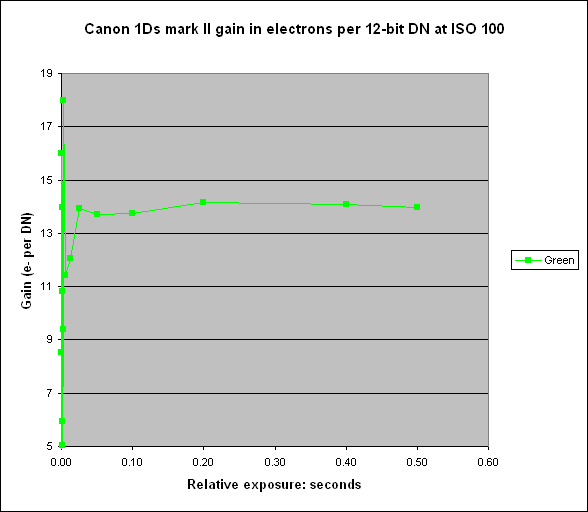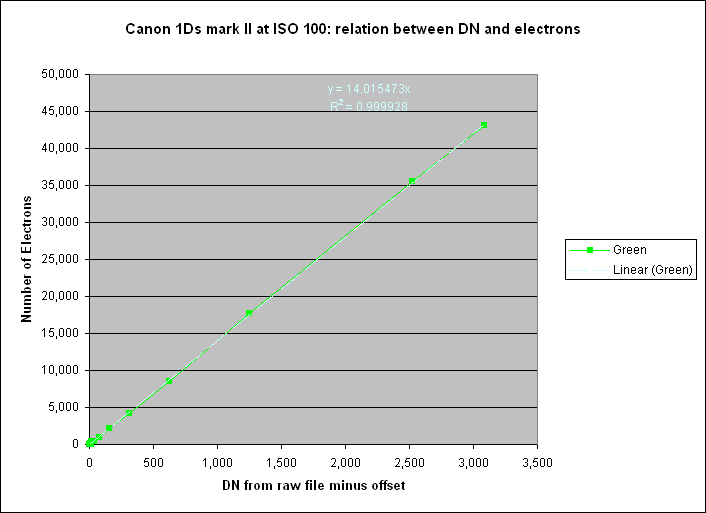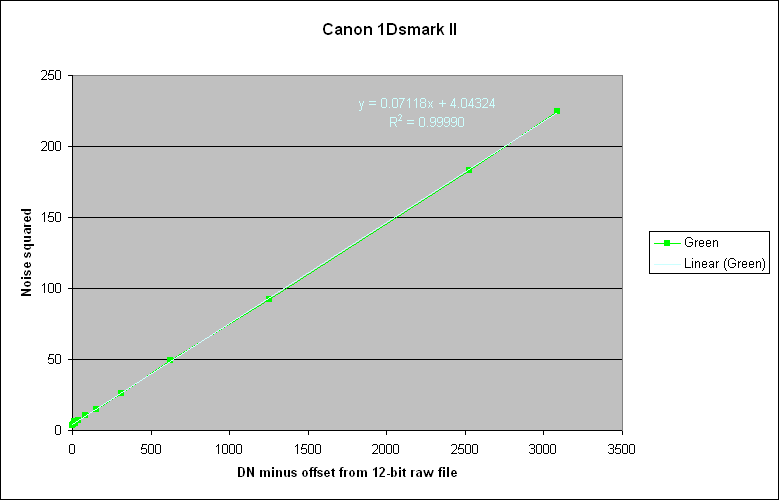See here.
The table below shows statistics of a 200 x 200 pixel area in the centre of each image for the green component after the two frames have been subtracted.
Note that the top five exposures are clipped, and this is why their standard deviation is zero.
The number of electrons is calculated by squaring the signal-to-noise ratio, and the latter is calculated after quadratically subtracting the read noise from the measured noise.
The gain is calculated by dividing the number of electrons by the Mean DN. It is plotted below:

Ideally this should be a straight, horizontal line because the gain is, ex hypothesi, independent of exposure. It should vary only as a function of ISO setting. For the 1DsII at ISO 100 the gain is about 14.
The gain goes wild at low exposures, but this is ok because it becomes increasingly difficult to measure the gain accurately as exposure reduces.
A better estimate of the gain can be got from plotting the number of electrons against DN minus offset:

The white line shows the result of a linear regression on the 17 points between DN=0.5 and DN=3086. The result, with intercept constrained to be zero, is:
Number of electrons = 14.0155 * (DN-offset), R² = 0.9999
Hence I measure the gain of the Canon 1DsII as 14.02 electrons per DN, in the green component of the Bayer array, when written to 12-bit CR2 files.
Since the mean DN-offset at green saturation is 3582.6 (from table above), it follows that the well content of the Canon 1DsII at maximum signal is 3582.6 * 14.0155 = 50,211 electrons.
The full well capacity cannot be measured due to firmware clipping of the signal.
An alternative way of measuring the gain, which also provides an alternative figure for read noise, is to exploit the equation:
N² = (1/g)*S + E², where E is the read noise in DN and g is the gain in electrons per DN.

A graph of measured noise squared against mean DN should therefore be a straight line with gradient 1/g and intercept giving the square of the read noise in DN. This is plotted opposite together with a straight line fit:
This gives gain = 1/0.07118 = 14.049 electrons/DN, a slightly higher figure than that obtained above. The corresponding figure for electrons at maximum signal is 50,331.
The read noise = squareroot(4.04324) = 2.01 DN. This compares with the figure of 1.91 measured by a different technique here.
© Peter Facey, Winchester, England
20080318 originated